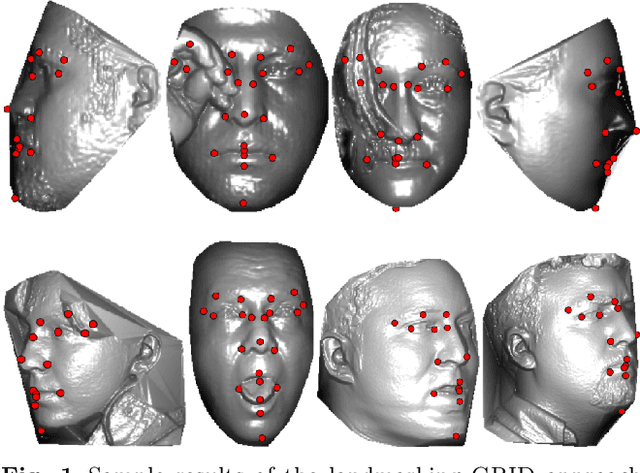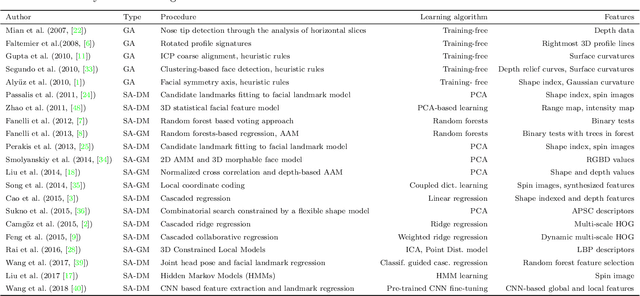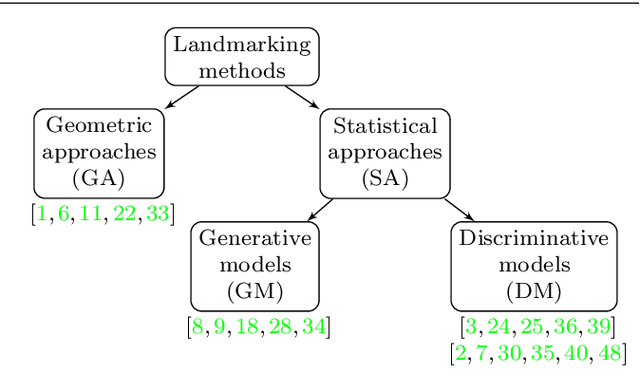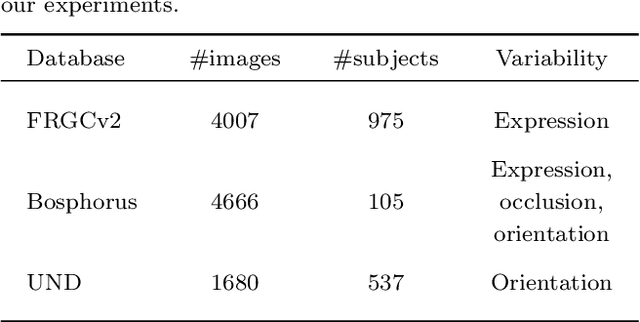Simon Dobrišek
FICE: Text-Conditioned Fashion Image Editing With Guided GAN Inversion
Jan 05, 2023Abstract:Fashion-image editing represents a challenging computer vision task, where the goal is to incorporate selected apparel into a given input image. Most existing techniques, known as Virtual Try-On methods, deal with this task by first selecting an example image of the desired apparel and then transferring the clothing onto the target person. Conversely, in this paper, we consider editing fashion images with text descriptions. Such an approach has several advantages over example-based virtual try-on techniques, e.g.: (i) it does not require an image of the target fashion item, and (ii) it allows the expression of a wide variety of visual concepts through the use of natural language. Existing image-editing methods that work with language inputs are heavily constrained by their requirement for training sets with rich attribute annotations or they are only able to handle simple text descriptions. We address these constraints by proposing a novel text-conditioned editing model, called FICE (Fashion Image CLIP Editing), capable of handling a wide variety of diverse text descriptions to guide the editing procedure. Specifically with FICE, we augment the common GAN inversion process by including semantic, pose-related, and image-level constraints when generating images. We leverage the capabilities of the CLIP model to enforce the semantics, due to its impressive image-text association capabilities. We furthermore propose a latent-code regularization technique that provides the means to better control the fidelity of the synthesized images. We validate FICE through rigorous experiments on a combination of VITON images and Fashion-Gen text descriptions and in comparison with several state-of-the-art text-conditioned image editing approaches. Experimental results demonstrate FICE generates highly realistic fashion images and leads to stronger editing performance than existing competing approaches.
High Resolution Face Editing with Masked GAN Latent Code Optimization
Mar 20, 2021



Abstract:Face editing is a popular research topic in the computer vision community that aims to edit a specific characteristic of a face image. Recent proposed methods are based on either training a conditional encoder-decoder Generative Adversarial Network (GAN) in an end-to-end fashion or on defining an operation in the latent space of a pre-trained vanilla GAN generator model. However, these methods exhibit a certain degree of visual degradation and lack disentanglement properties in the edited images. Moreover, they usually operate on lower image resolution. In this paper, we propose a GAN embedding optimization procedure with spatial and semantic constraints. We optimize a latent code of a GAN, pre-trained on face dataset, to embed a fixed region of the image, while imposing constraints on the inpainted regions with face parsing and attribute classification networks. By latent code optimization, we constrain the result to follow an image probability distribution, as defined by the GAN model. We use such framework to produce high image quality face edits. Due to the spatial constraints introduced, the edited images exhibit higher degree of disentanglement between the desired facial attributes and the rest of the image than other methods. The approach is validated in experiments on three datasets and in comparison with four state-of-the-art approaches. The results demonstrate that the proposed approach is able to edit face images with respect to several facial attributes with unprecedented image quality, while disentangling the undesired factors of variation. Code will be made available.
Simultaneous regression and feature learning for facial landmarking
Apr 24, 2019



Abstract:Face alignment (or facial landmarking) is an important task in many face-related applications, ranging from registration, tracking and animation to higher-level classification problems such as face, expression or attribute recognition. While several solutions have been presented in the literature for this task so far, reliably locating salient facial features across a wide range of posses still remains challenging. To address this issue, we propose in this paper a novel method for automatic facial landmark localization in 3D face data designed specifically to address appearance variability caused by significant pose variations. Our method builds on recent cascaded-regression-based methods to facial landmarking and uses a gating mechanism to incorporate multiple linear cascaded regression models each trained for a limited range of poses into a single powerful landmarking model capable of processing arbitrary posed input data. We develop two distinct approaches around the proposed gating mechanism: i) the first uses a gated multiple ridge descent (GRID) mechanism in conjunction with established (hand-crafted) HOG features for face alignment and achieves state-of-the-art landmarking performance across a wide range of facial poses, ii) the second simultaneously learns multiple-descent directions as well as binary features (SMUF) that are optimal for the alignment tasks and in addition to competitive landmarking results also ensures extremely rapid processing. We evaluate both approaches in rigorous experiments on several popular datasets of 3D face images, i.e., the FRGCv2 and Bosphorus 3D Face datasets and image collections F and G from the University of Notre Dame. The results of our evaluation show that both approaches are competitive in comparison to the state-of-the-art, while exhibiting considerable robustness to pose variations.
Face Hallucination Revisited: An Exploratory Study on Dataset Bias
Dec 21, 2018



Abstract:Contemporary face hallucination (FH) models exhibit considerable ability to reconstruct high-resolution (HR) details from low-resolution (LR) face images. This ability is commonly learned from examples of corresponding HR-LR image pairs, created by artificially down-sampling the HR ground truth data. This down-sampling (or degradation) procedure not only defines the characteristics of the LR training data, but also determines the type of image degradations the learned FH models are eventually able to handle. If the image characteristics encountered with real-world LR images differ from the ones seen during training, FH models are still expected to perform well, but in practice may not produce the desired results. In this paper we study this problem and explore the bias introduced into FH models by the characteristics of the training data. We systematically analyze the generalization capabilities of several FH models in various scenarios, where the image the degradation function does not match the training setup and conduct experiments with synthetically downgraded as well as real-life low-quality images. We make several interesting findings that provide insight into existing problems with FH models and point to future research directions.
Face hallucination using cascaded super-resolution and identity priors
May 28, 2018



Abstract:In this paper we address the problem of hallucinating high-resolution facial images from unaligned low-resolution inputs at high magnification factors. We approach the problem with convolutional neural networks (CNNs) and propose a novel (deep) face hallucination model that incorporates identity priors into the learning procedure. The model consists of two main parts: i) a cascaded super-resolution network that upscales the low-resolution images, and ii) an ensemble of face recognition models that act as identity priors for the super-resolution network during training. Different from competing super-resolution approaches that typically rely on a single model for upscaling (even with large magnification factors), our network uses a cascade of multiple SR models that progressively upscale the low-resolution images using steps of $2\times$. This characteristic allows us to apply supervision signals (target appearances) at different resolutions and incorporate identity constraints at multiple-scales. Our model is able to upscale (very) low-resolution images captured in unconstrained conditions and produce visually convincing results. We rigorously evaluate the proposed model on a large datasets of facial images and report superior performance compared to the state-of-the-art.
 Add to Chrome
Add to Chrome Add to Firefox
Add to Firefox Add to Edge
Add to Edge